Unruly Objects is a series of closely connected projects exploring the conservation of biological media and BioArt, and its inclusion in museum collections.
- Skip to “Unruly Objects and Biological Conservation“
- Skip to “Unruly Objects: Living Latex“
- Skip to “Unruly Objects: Challenging Barriers to BioArt in the Museum“
Unruly Objects and Biological Conservation
Anna Dumitriu is collaborating with the Department of Conservation of Antiquities and Works of Art at The University of West Attica in Athens (Greece) to explore the biology and chemistry of conservation through an active collaboration with the department’s leader Professor Georgios Panagiaris. In his lab Professor Panagiaris’ team explore the biochemistry of bacteria and yeasts to produce microbes that are able to aid in the preservation of artworks and antiquities rather than destroy them and are attempting to work with the microbiomes of artworks to help stabilise their decay.

Dumitriu is collaborating with the research team to explore the ethics and risks of such a strategy and discuss how these ideas will impact the preservation of contemporary “unruly objects” (Rubio, 2014) such as her BioArt works (made with bacteria and yeasts), including her own artistic experiments inspired by the lab’s research, thus kick-starting discussions around the preservation of contemporary BioArt in the context of a major institution. Due to the nature of materials used in BioArt works, museums are often very cautious about collecting them. This project aims to explore the field of biological conservation and question what materials are acceptable in a museum environment.
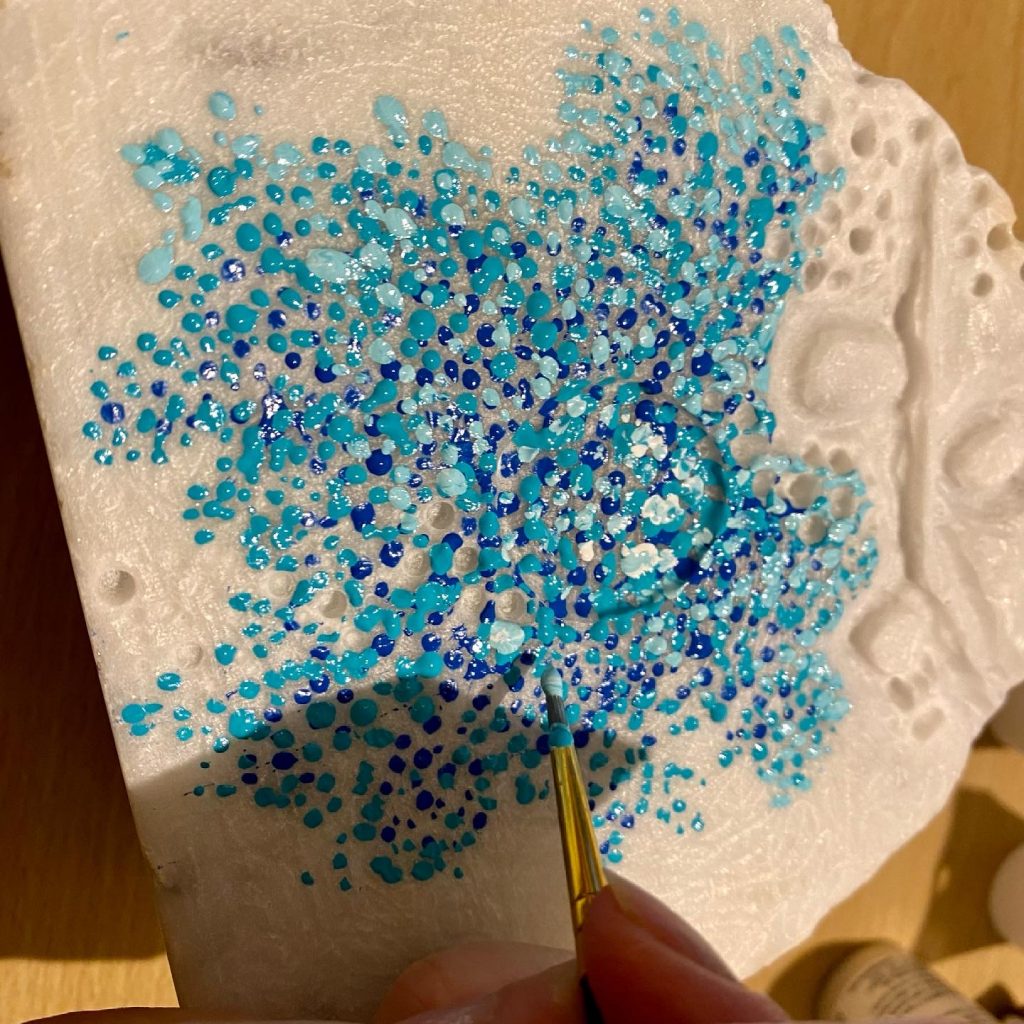
The project explores and challenges notions and methodologies of conservation, including the use of blockchain technologies as a means of storage for the provenance of the artwork, of the artist’s authentic documentation, and the artist’s intentions.
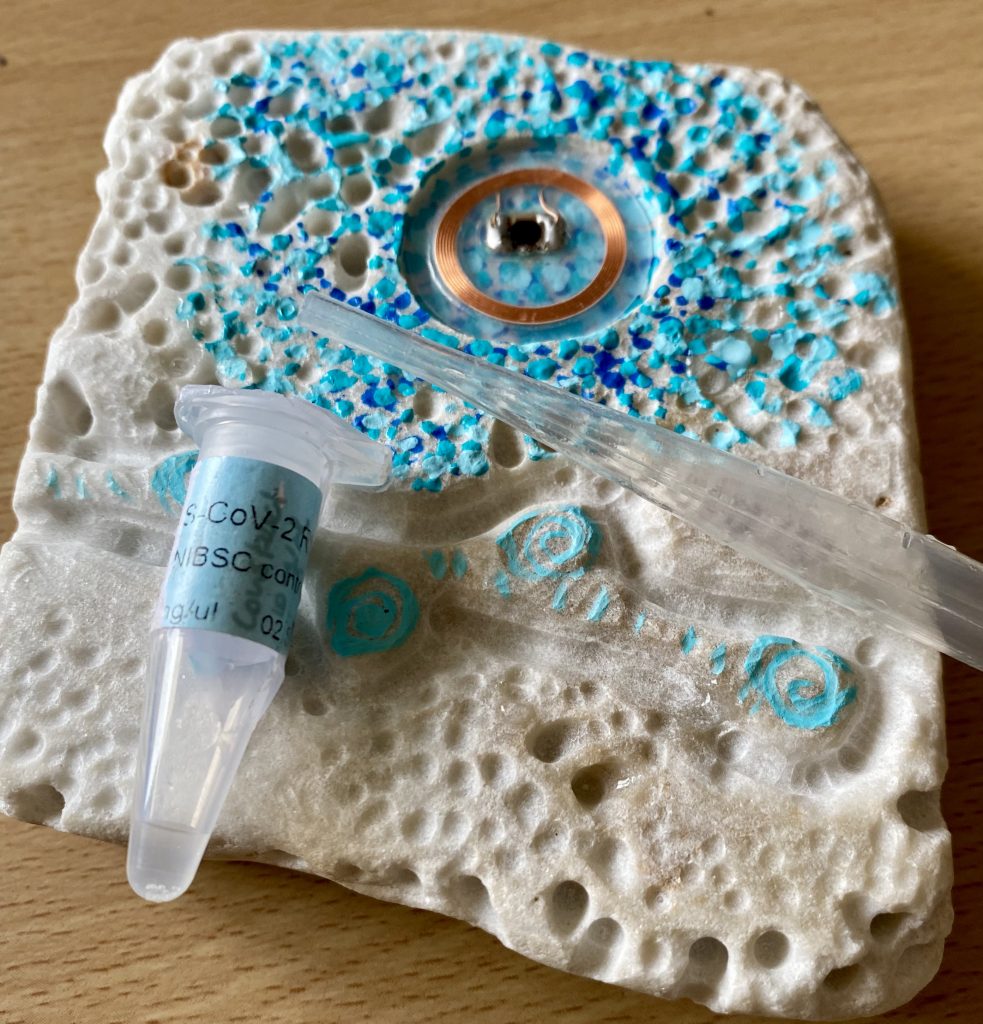
A series of ‘sketches’ or tools for thinking about this process are being developed, in the form of three carved pieces of reclaimed marble. Dumitriu has power-carved the marble based on scanning electron microscope images of the micro-organisms that eat away at antiquities and images of the damaged stone (the SEM images were created by Athanasios Karabotsos). The holes are carved because conservator Zoe Sakki said that these, bacteria and plant roots are the greatest challenges to her work in preserving ancient Greek antiquities.
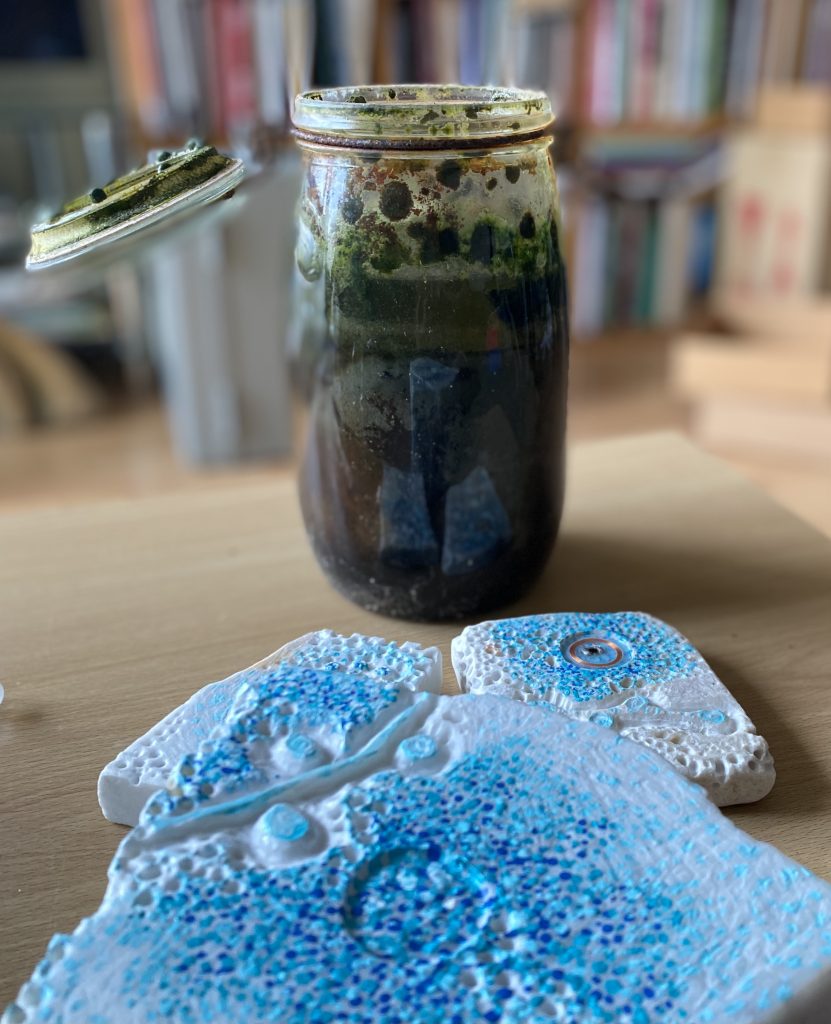
The painting references how ancient Greek statues were originally brightly painted and looked nothing like our modern notion of classical art. When the colour (or some other aspect) disappears from a modern artwork that work is usually hidden from view (retired to the archive).

The work also includes biological material including mud from a bacterial ecosystem known as a Winogradsky Column, Common Cress seeds, and SARS-CoV-2 RNA (coronavirus) from a plasmid construct. This last element is a safe, non-infectious reagent for SARS-CoV-2 research (NIBSC 19/304), obtained from the National Institute for Biological Standards and Control, UK. SARS-CoV-2 RNA was supplied by researchers Dr Ines Moura and Dr Jane Freeman at the University of Leeds who are working with the SARS-CoV-2 primers and the RNA construct in the development and use of a RT-PCR assay for SARS-CoV-2 detection in faeces.

The works also contain RFID tags sealed in resin – these also point to the location of the project documentation, so that the works also physically include their own instructions for the conservator. This can often be very difficult to track down.
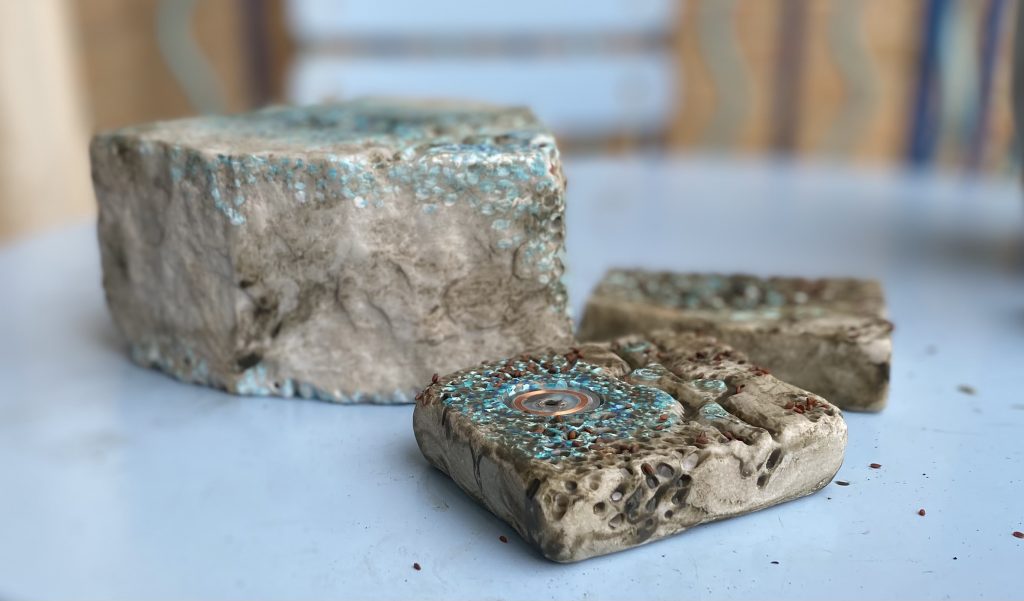

Through discussions in this project Dumitriu learned that a key element in conservation is to preserve to story of the object and it seems that Dumitriu’s alterations of historical artefacts in works such as Pneumothorax Machine, or Blue Henry are in line with this, they help the objects better communicate their relevance and meaning. So in a way Dumitriu’s work can be seen as a form of conceptual conservation. In fact the three sketches for this project themselves reveal the processes and challenges of conservation and can perhaps be seen as conserving conservation.

The three sketches have been split up and experience different fates: the first remains with the artist who will observe its changes and try to capture and preserve its decay at the most beautiful point. This is inspired by a visit to a former prison in the United States where the curators are attempting to suspend it in a state of partial (but beautiful decay) which Dumitriu visited in Philadelphia.
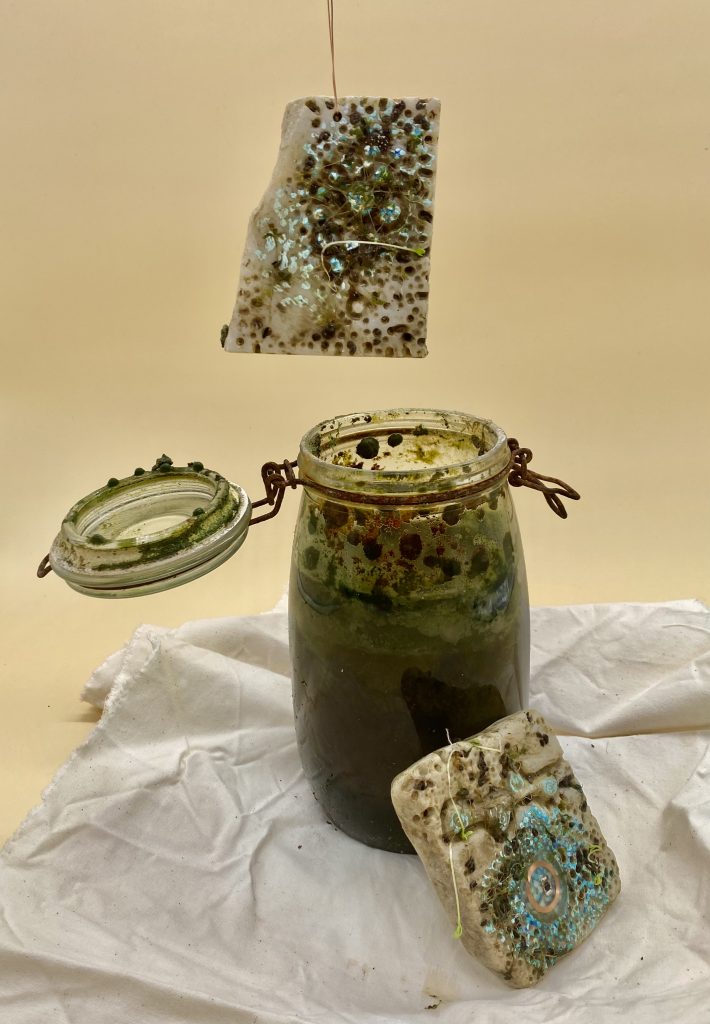
A second sketch has been buried in a Winogradsky Column where the bacteria there will interact with it (the result cannot be anticipated). Every few years the decay will be observed and documented. The object is shown next to the Winogradsky Column in exhibitions.

The third sketch has been sent to the University of Western Attica where Dumitriu worked Athanasios Karabotsos to look at it under a scanning electron microscope and analyse its components. Conservator Zoe Sakki is undertaking the conservation work. Also working with Zoe Sakki, are Athanasios Velios and Alex May, who are working to ensure the documentation and provenance of the works will be stored on the blockchain. An important part of this involves collating and storing every bit of artist’s documentation possible, and subsequent conservation reports.

The project is undertaken in collaboration with Georgios Panagiaris (University of Western Attica (Department of Antiquities and Works of Art) and his colleagues (internal and external) including Athanasios Karabotsos, Zoe Sakki, Veroniki Korakidou, Helia Marçal (UCL), Athanasios Velios (UAL), Alex May, Ekaterini Malea, Maria Chatzidaki, Andreas Sabatakos, Alexis Stefanis, Anastasios Koutsouris, and Leonidas Karampinis.
The project received funding from an A-N Artists Bursary 2020 (extended to 2021 due to the COVID-19 Pandemic).
Publication in Technoetic Arts
A paper “Unruly objects: NFTs, blockchain technologies and bio-conservation” by Anna Dumitriu, Alex May, Athanasios Velios, Zoi Sakki, Veroniki Korakidou, Hélia Marçal and Gerogios Panagiaris was published in September 2022 by Technoetic Arts.
Unruly Objects: Living Latex
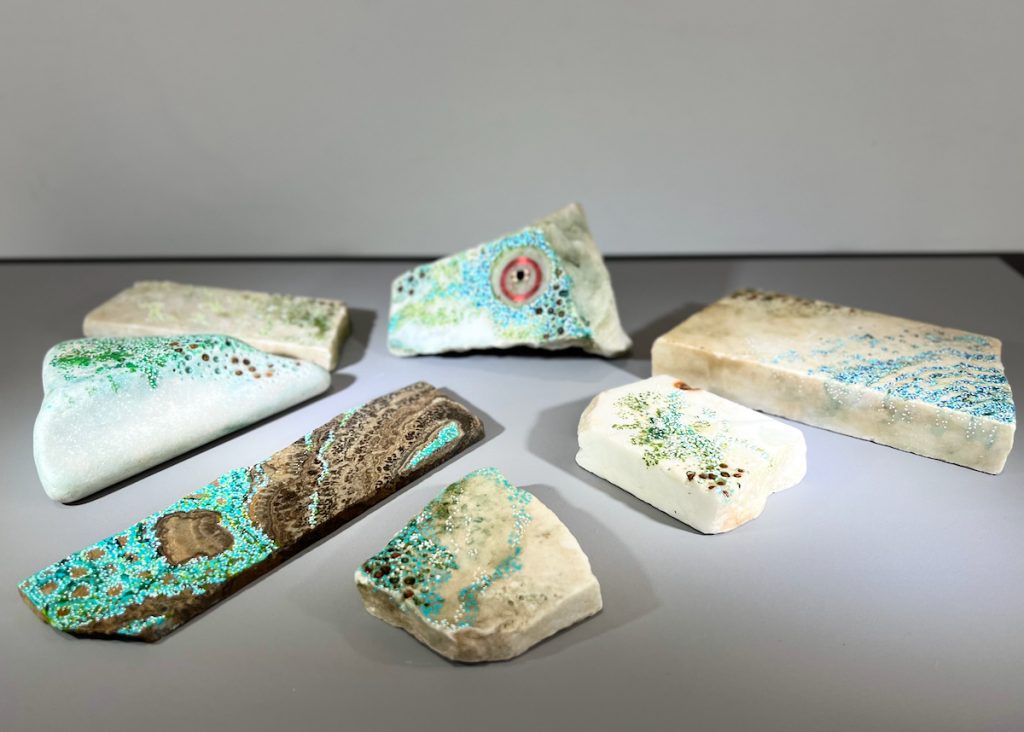
A further development to the project (2022) explores research taking place at the University of Surrey by Simone Krings, Dr Suzie Hingley-Wilson and Professor Joseph Keddie to reduce the impact of climate change by capturing carbon using cyanobacteria which are encapsulated into a kind of ‘living latex’.
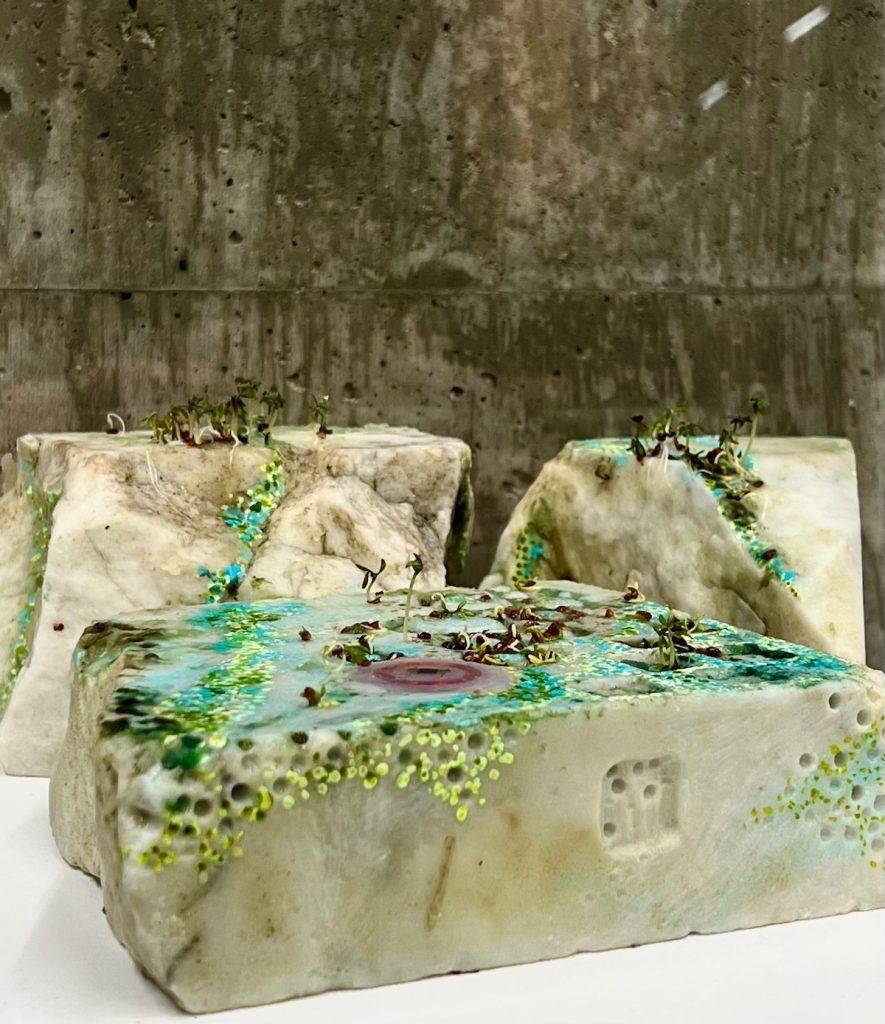
The use of latex in work references the 2014 paper by Fernando Domínguez Rubio “Preserving the Unpreservable: Docile and Unruly Objects at MoMA” in which he discusses whether Eva Hesse’s latex artwork “Expanded Expansion” should still be displayed, saying “the original translucent and ethereal sculpture has now become a yellow, brittle artifact. The physical transformation has been so radical that it has prompted a wide controversy in the art world as to whether this piece should be exhibited at all.” This is ironic as the white marble classical sculptures that fill our museums are radically different from the brightly painted objects that originally adorned sites of antiquity.
Cyanobacteria (or blue-green algae) live in all types of water and are believed to be at the origin of plants. By their carbon capturing properties and oxygen evolution, they had a huge impact in the history of the earth. Encapsulating these bacteria into synthetic latex allows them to be coated onto any surface, therefore creating functional paints.
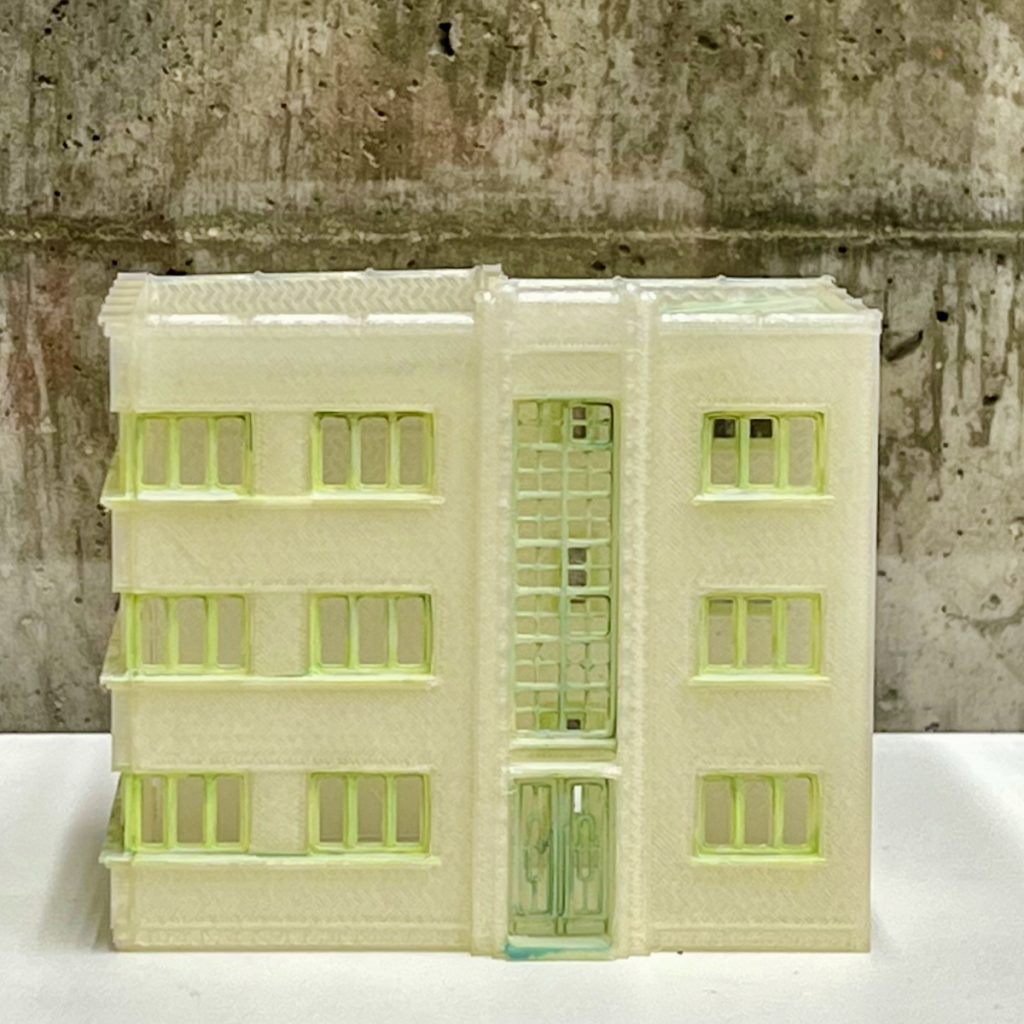
The work here also builds further on Dumitriu’s collaboration with the Department of Antiquities and Works of Art University of Western Attica in Athens and focuses on their research into ways to augment and enhance the microbiomes of sculptural antiquities to prevent or arrest their further decay (CO2 damage is a particular issue), and her Fermenting Futures series with BOKU University which explored the carbon capturing properties of yeast and the microbiomes of antiquities. Additional funding for this part of the project was received from the Institute of Advanced Studies Fellowship at the University of Surrey, and the National Biofilms Innovation Centre as well as from a Developing Your Creative Practice Award from Arts Council England.
Unruly Objects: Challenging Barriers to BioArt in the Museum
Supported by a Developing Your Creative Practice Award from Arts Council England Anna Dumitriu has undertaken an extended period of deep research into the barriers that exist within arts institutions against the collection of BioArt, and her aim is to develop ambitious strategies to facilitate its inclusion.
BioArt is an emerging artistic movement where artists work with biological media such as cells or DNA, to explore our relationship to the living world and the practice of science and healthcare in society. It speaks to issues that directly impact audiences today. BioArt was described by the Art Newspaper as “the new avant-garde” as far back as 2016 but it is still absent from art collections. Museums view BioArt works as “Unruly Objects” that do not fit with their existing collecting strategies, this means commercial art galleries and private collectors are also unwilling to take risks. As part of the project Dumitriu has worked to build mechanisms to enable BioArt to be collected by institutions and develop new networks that can help support its inclusion, she has tested, and continues to test, these ideas artistically. She has worked with many experts from the museum and gallery sector, including Bhavani Esapathi who has extensive experience in creating new pathways into arts institutions including Irini Papadimitriou, the artistic director of FutureEverything, who curates BioArt in institutional settings, Dr Zoi Sakki, President of the Association of Conservators of Antiquities and Works of Art in Greece, curator Heike Sutter, and art historian Dr Helia Marcal.
Exhibitions
“Unruly Objects: Living Latex” was exhibited as part of “Entangled Health“, Tuesday 21st June 2022 at the University of Surrey (UK)
“Unruly Objects: Living Latex” was exhibited as part of “Collateral Effects: Biofilms” at BDH Openwide, at Birmingham Dental Hospital in Birmingham (UK) from 1st September to 31st October 2022.
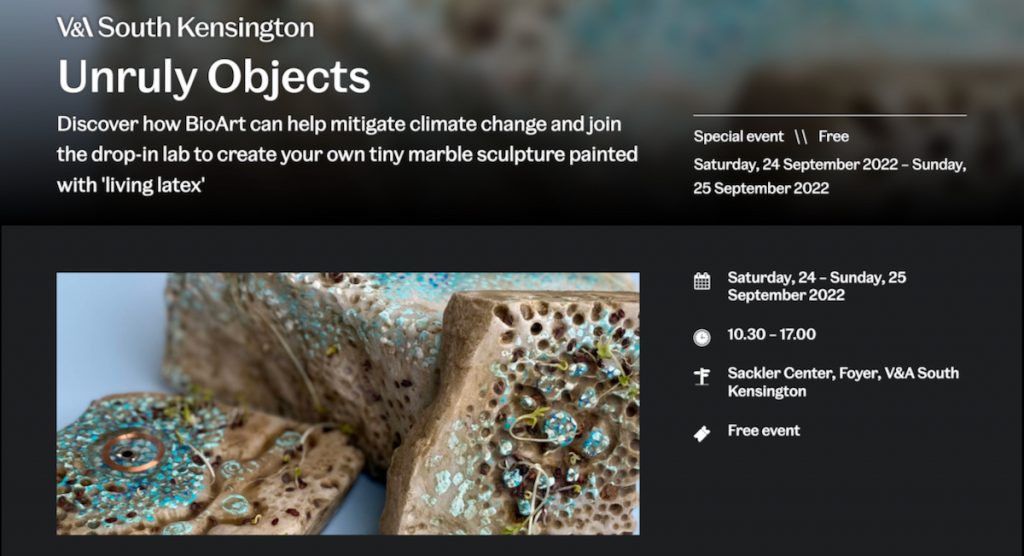
“Unruly Objects: Living Latex” was exhibited at V & A Museum’s Digital Design Weekend as part of the London Design Festival, London (UK) from 23rd to 25th September 2022. Accompanied by a highly successful participatory workshop.
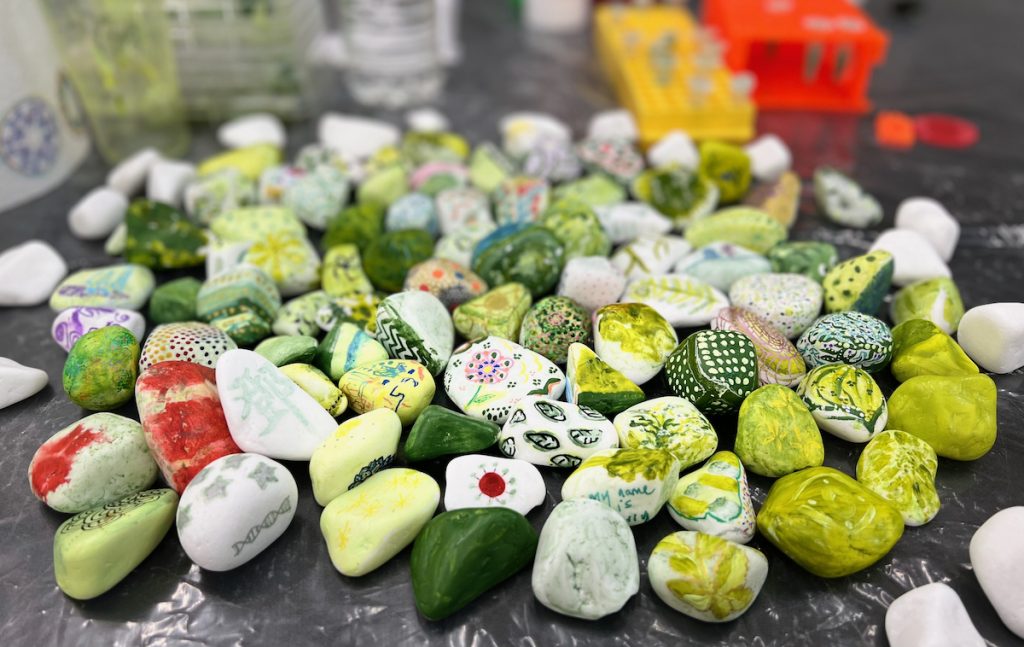
“Unruly Objects: Living Latex” was exhibited as part of “Collateral Effects” at the North Wall Oxford (UK) from the 5th – 29th October 2022.
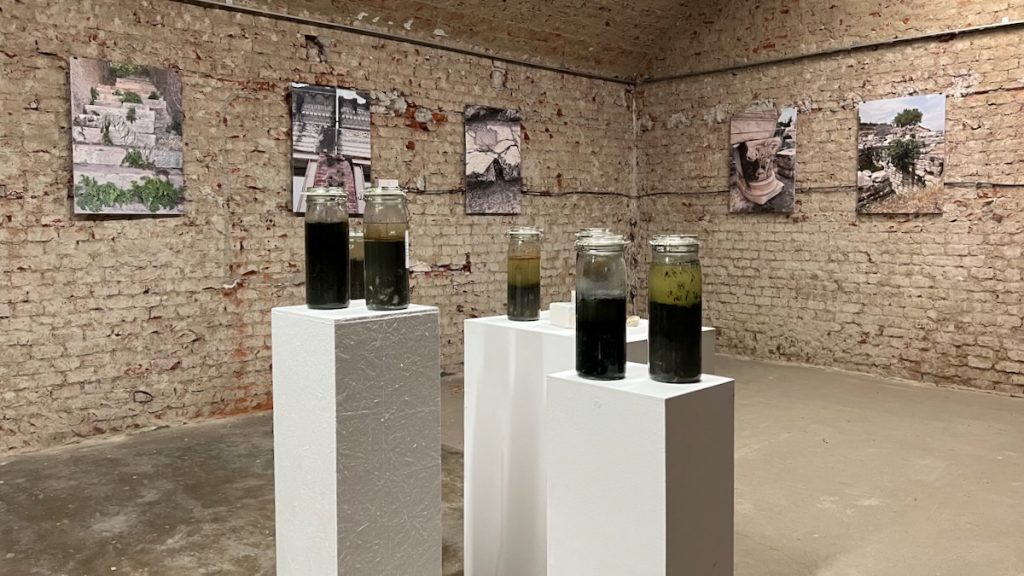
“BioArt Revolution: Unruly Objects”, CAZARMA U, Timisoara as part of the European Capital of Culture 2023 from 21st September – 30th October 2023. In collaboration with the Romanian Science Festival and Spotlight Heritage Timisoara.
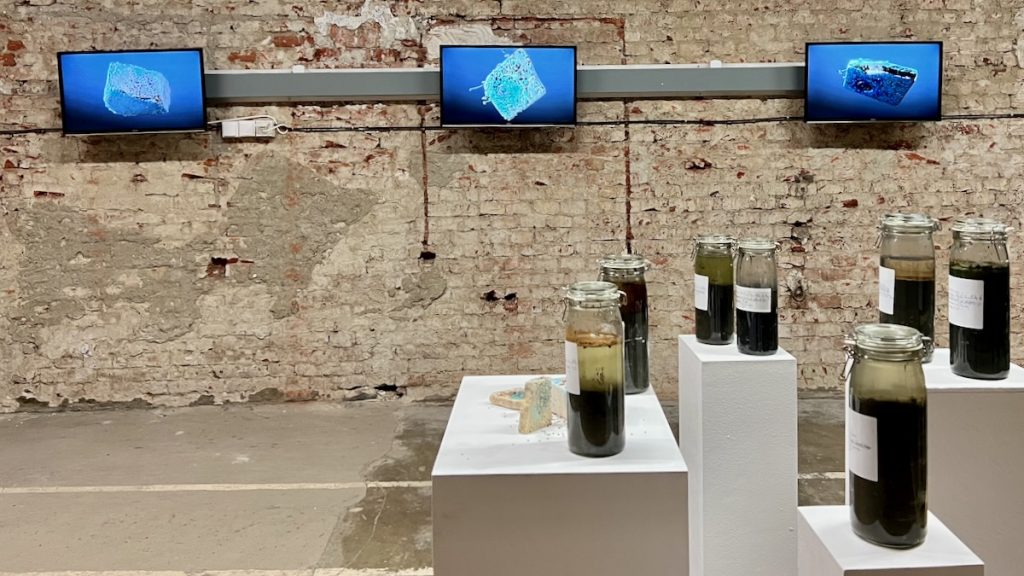
“BioArt Knowledge” at the Yarrow Gallery, Oundle, UK from 9th November to 6th December 2023.

